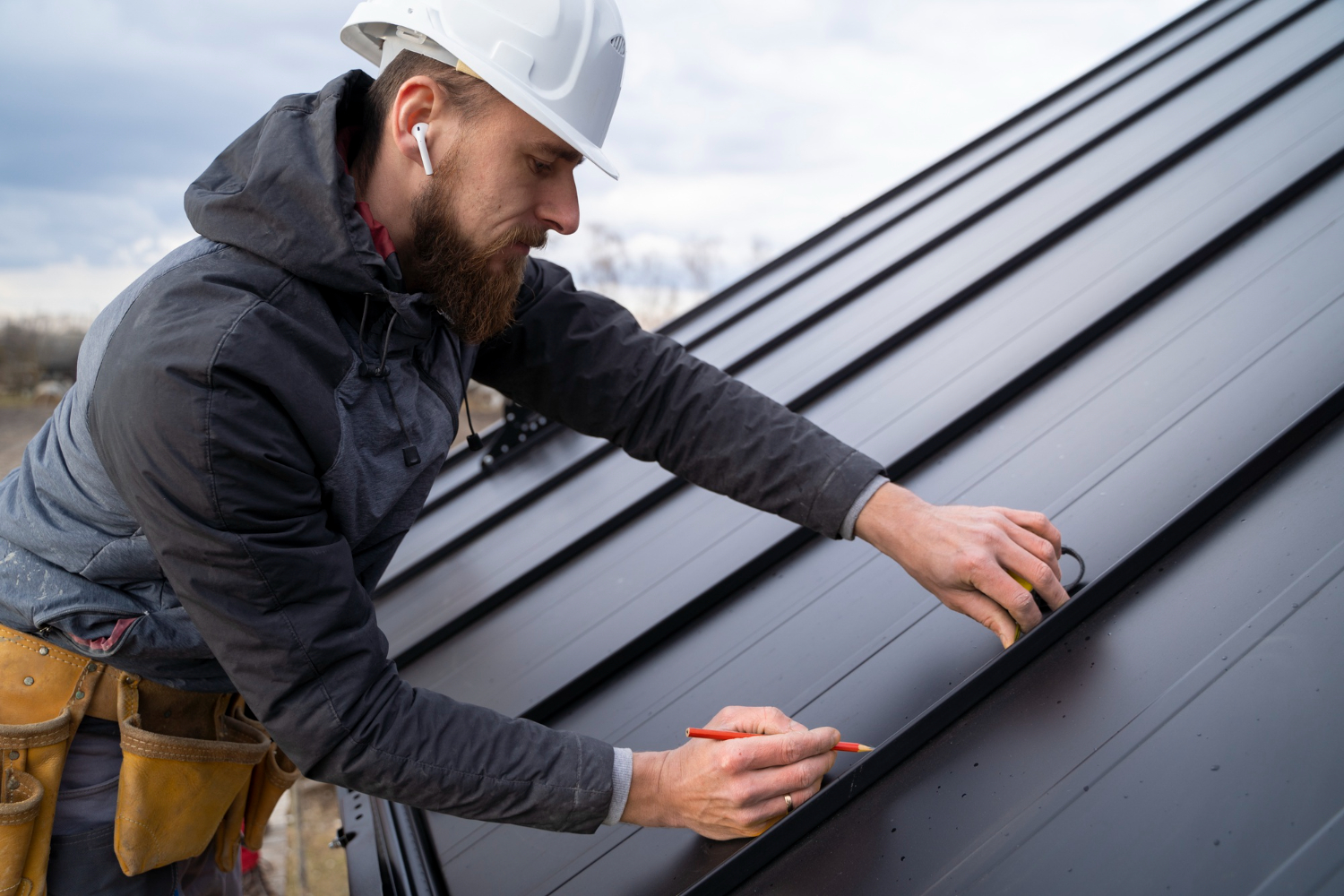Table of Contents
- 1 Table of Contents:
- 2 Key Takeaways:
- 3 Introduction to Sustainable Construction
- 4 Benefits of Metal Roofing and Siding
- 5 Aesthetic Advantages of Metal in Construction
- 6 The Economic Perspective
- 7 Metal Roofing, Siding, and Building Regulations
- 8 Innovations in Metal Roofing and Siding
- 9 The Future of Construction Materials
 Table of Contents:
Table of Contents:
- Introduction to Sustainable Construction
- Benefits of Metal Roofing and Siding
- Aesthetic Advantages of Metal in Construction
- The Economic Perspective
- Metal Roofing, Siding, and Building Regulations
- Innovations in Metal Roofing and Siding
- The Future of Construction Materials
Key Takeaways:
- Metal roofing and siding are pivotal elements in sustainable construction, garnering attention for their remarkable longevity and recyclability.
- With their varied design potential and integral role in modern architecture, metal materials look poised to shape the future of eco-friendly building practices.
Introduction to Sustainable Construction
Sustainability is critical in modern building design. Architects and builders seek innovative, functional, cost-effective materials that align with environmental stewardship. Metal roofing and siding are popular solutions that meet these demands. As green construction becomes a global standard, using sustainable materials is essential. Metal roofing and siding represent a commitment to minimizing resource depletion and promoting circular economies.
Benefits of Metal Roofing and Siding
The benefits of using metal roofing and siding in building exteriors go beyond their eco-friendliness. Regarding durability, metal materials have a much longer lifespan than other materials, lasting for several decades with minimal maintenance. This means fewer replacements and a reduced environmental impact on a building’s life.
Metal roofing and siding are excellent choices for energy efficiency. Their reflective properties deflect sunlight and heat, leading to significant energy savings, especially in warmer climates. Metal siding and roofing enhance a building’s insulation capabilities, providing a more comfortable indoor environment and reducing HVAC energy demand. These benefits demonstrate the environmental and economic value of using metal roofing and siding in construction.
Aesthetic Advantages of Metal in Construction
Today’s construction landscape calls for materials offering functional excellence and visual appeal. Metal roofing and siding approach this challenge with various design and color options that can complement any style, whether contemporary chic or rustic charm. The versatility of metal allows architects and designers to unleash their creativity, tailoring the look to the context of the surrounding environment.
Historically viewed as reserved for industrial or utilitarian buildings, metal has undergone an aesthetic revolution, showcased in many prestigious projects across the globe. It has proven itself as a material that elegantly bridges the realms of practicality and aesthetic prowess. With advancements in finishes and treatments, metal exteriors can exude the warmth of traditional materials while delivering the unmatched benefits of modern technology.
The Economic Perspective
Economic considerations are paramount when evaluating the suitability of construction materials. Metal roofing and siding offer an astute financial proposition by striking a balance between upfront costs and long-term expenditure. While the initial outlay for metal might be higher than some conventional materials, its longevity and resilience can lead to cost savings over time through diminished repair and replacement fees.
A comprehensive analysis of life-cycle costs reaffirms the prudence of investing in metal building exteriors. Alongside the tangible benefits of lower maintenance expenses and longevity, the indirect financial upsides manifest in areas such as property insurance premiums, which can be lower for metal-clad structures due to their superior resistance to fire and adverse weather. Moreover, incorporating stylish and durable metal elements into a building can enhance its market appeal and resale value—an aspect not to be overlooked by property owners.
Metal Roofing, Siding, and Building Regulations
Metal roofing and siding must comply with local building codes and regulations. Metal exceeds the minimum requirements for fire resistance, wind uplift, and energy efficiency. It simplifies the approval process for new constructions and highlights the material’s inherent ability to provide safe and sustainable building solutions. Advancements in metal roofing technology ensure that these materials can meet the evolving demands of the construction industry.
Innovations in Metal Roofing and Siding
As the construction industry advances, relentless innovation keeps metal roofing and siding at the forefront of building materials. Cutting-edge manufacturing techniques have refined the production of metal components, augmenting their quality and functionality. These enhancements make metal products more adaptable to diverse architectural designs and more robust regarding environmental performance.
Integrating innovative technology into metal building materials is yet another stride toward modernity. The potential applications are vast and varied, from coatings that can actively repel dirt and reduce maintenance needs to systems that facilitate harvesting rainwater. Keeping pace with the swift advancement of technology, the metal construction sector stands ready to embrace and integrate emerging developments that could redefine sustainability in the built environment.
The Future of Construction Materials
Metal roofing and siding are at the forefront of the construction industry’s shift towards sustainability. These materials are predicted to continue gaining popularity due to their innovative advancements and eco-friendly features. Metal’s durability, energy efficiency, and recyclability make it a standard bearer in the quest for ecological balance. It’s a prime example of creating sustainable structures that will last years.







